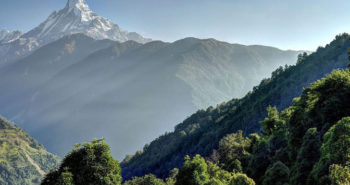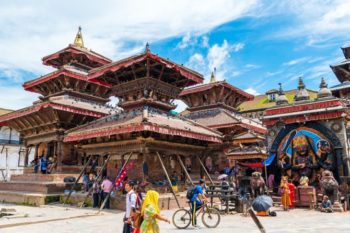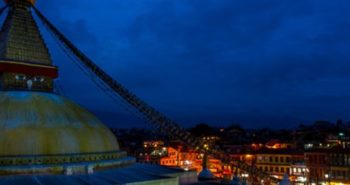Upper Dolpo Trek Best Time
Dolpo lies in the remote north of far west of Nepal, between the Tibetan Plateau and the Dhaulagiri mountain ranges. The Upper Dolpo trek takes in the upper part of this region. Remote and rarely visited, this area only opened to visitors at the end of the 1980s, Upper Dolpo is still considered a restricted area and requires a special permit.
Fast flowing rivers, magnificent waterfalls, deep gorges, lush meadows and tilled fields await you. As do remote villages with interesting and ancient cultures. Falling partly in the Shey Phoksundo National Park, wildlife is protected. Although you may not spot a snow leopard, you may see tHimalayan blue sheep, goral, thar, Himalayan black bear etc.
But what is the best time to do the Upper Dolpo Trek?
Like many of the trekking routes in Nepal, spring and autumn are the best times to head for Upper Dolpo.
Having said that, we must also say that early spring and late autumn may not be a good time due to unpredictable snowfall. This could result in it being very difficult to cross the high passes at this time of year.
As the majority of Dolpo lies in the rain shadow of the Dhaulagiri Himal Range it receives little or no rain, including when other parts of the country are under monsoon rain conditions. Partly due to this, this area is a high altitude desert.
Regarding temperature, the ideal temperatures are found at the beginning of August till the end of October and often through to the middle of November.
Spring (March to May)
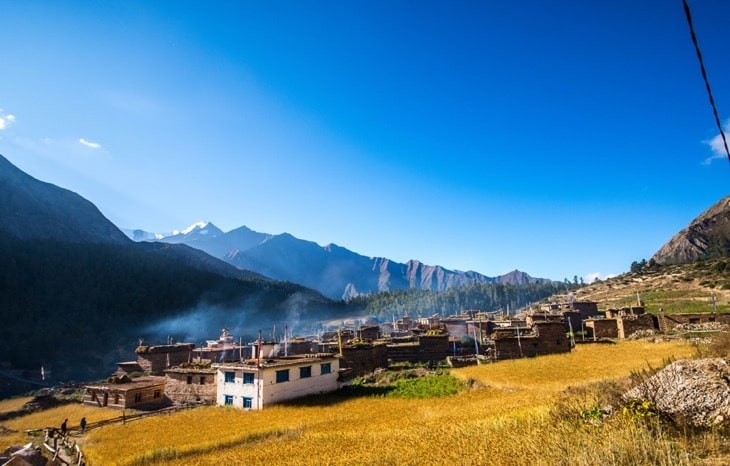
Spring is an excellent time for trekking in Lower Dolpo. However, for Upper Dolpo snow in the early spring can be problematic, with some passes very difficult or impossible to cross.
The best spring months for Upper Dolpo, therefore, are mid or end April through to the end of May.
Some of the amazing things you will see in Upper Dolpo in every season are Phoksundo Lake; Shey Gompa; Bon Po practitioners; Buddhist monasteries; views of Dhaulagiri; Crystal Mountain (a mountain whose cliffs are laced with quartz and marine fossils); unique Tibetan culture, and if you are very lucky, the magnificent and rare snow leopard.
Level of Difficulty in the Spring
Some passes may still be blocked with snow and impossible to use in the early spring. Be prepared to have to change route if necessary. Snow gear will be required in early March, perhaps right through to mid April. From mid April the weather and conditions are perfect and suitable for those with no technical/ snow trekking experience.
Temperatures will vary at this time from -10 C to 13 C (minus 10 over the high passes)
Monsoon/Summer (June to August)
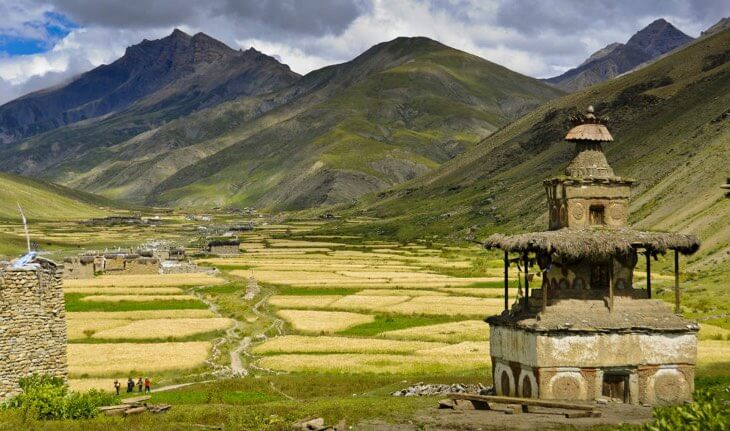
This is an excellent time to trek in the rain shadow area of Upper Dolpo – once you get there!
Getting there could be problematic as flights to Jhupal to/ from Nepalgunj will be subject to cancellation due to weather conditions. If choosing this time to trek, it is wise to build in another 2-3 days for possible flight cancellation.
Temperatures at this time are ideal.
Note that this is also the time the local community (and neighbouring communities) collect Yarsagumba (a caterpillar fungus sold for its aphrodisiac properties). Therefore local businesses and schools will be closed. This happens usually from mid May to end of June.
Level of Difficulty in the Monsoon
There will be no difficulty with regards to rain on the trek except during the first few days. Here the trails may be slippery due to rain. But further down the trail and into the rain shadow area, rain gear is not required and the trails will be dry. Monsoon weather conditions in the lower regions of the country might cause flight delays however. Local facilities may be closed during part of this period and consideration should be given to this fact.
Temperatures will vary from around -4C to 17C (minus 4 over the high passes)
Autumn (September to November)
Again, like other trekking regions in Nepal, this is an ideal time to visit Upper Dolpo. But do not leave it too late – November will see the weather and snows closing in. The best months are September and October. But since this is the Himalaya we suggest you be prepared in case of unseasonal snow!
Temperatures will be pleasant and the skies will be very clear. It is unlikely to have snow at this time of year.
This is also the harvesting months, which adds an interesting aspect to your trek as you pass through local communities.
Level of Difficulty in the Autumn
By November the snows will be arriving again making some of the passes impossible to cross. Plan accordingly. But it is unlikely to have snow in September and October.
Temperatures will vary from around -3 C in September over the high passes to -11C in November over the same passes. Average temperatures at lower altitudes will range from 20C to 14C as the autumn progresses into winter.
Winter (December to February)
Trekking in Upper Dolpo should not be attempted in the winter due to the extreme cold and heavy snowfalls that will block passes.
Level of Difficulty in the Winter
Should you be professional trekkers with much experience in snow conditions and with specialized gear then it might be possible. But for the rest of us, we do not recommend you attempt to trek in Upper Dolpo in the winter! It is pretty much impossible!
Temperatures will fall below minus 14C at higher elevations.
